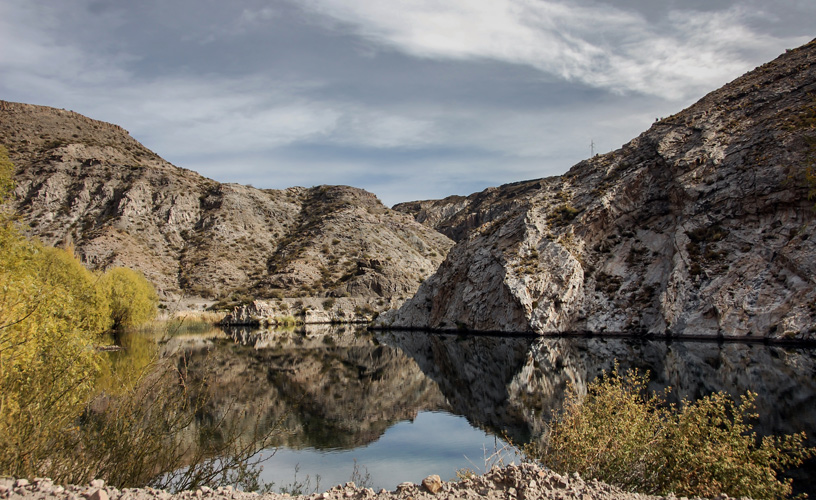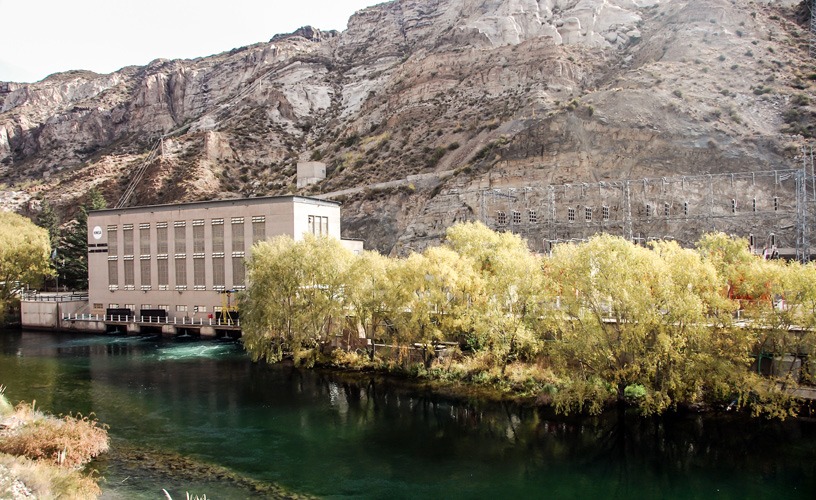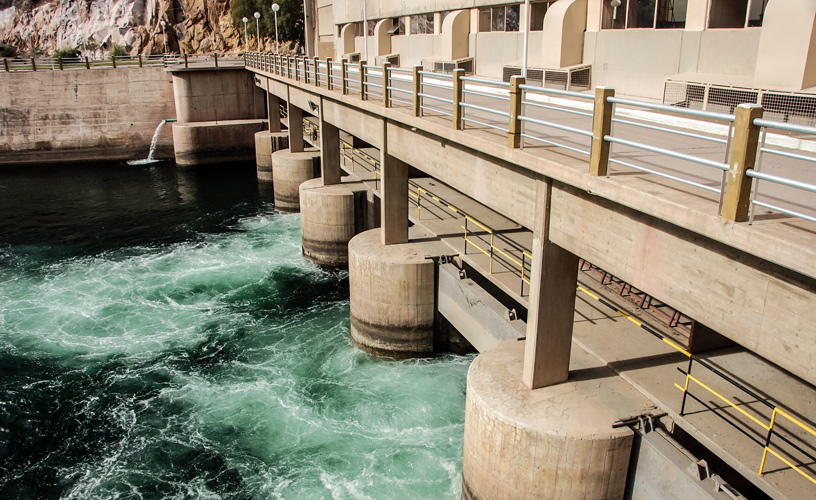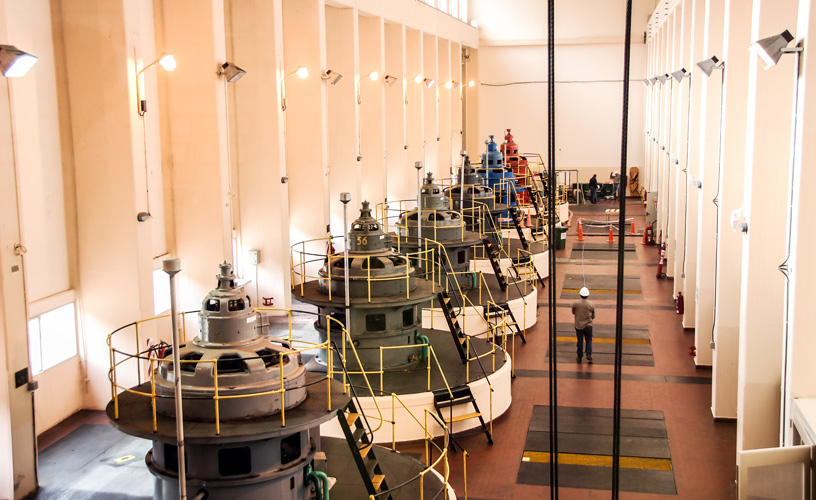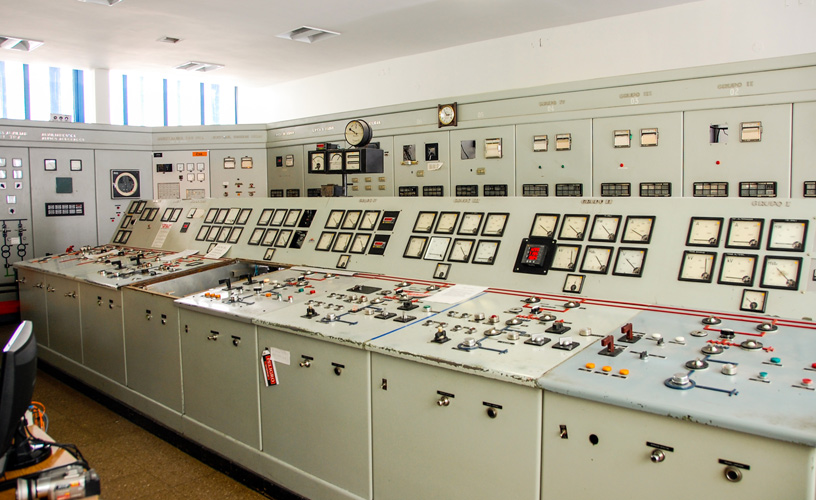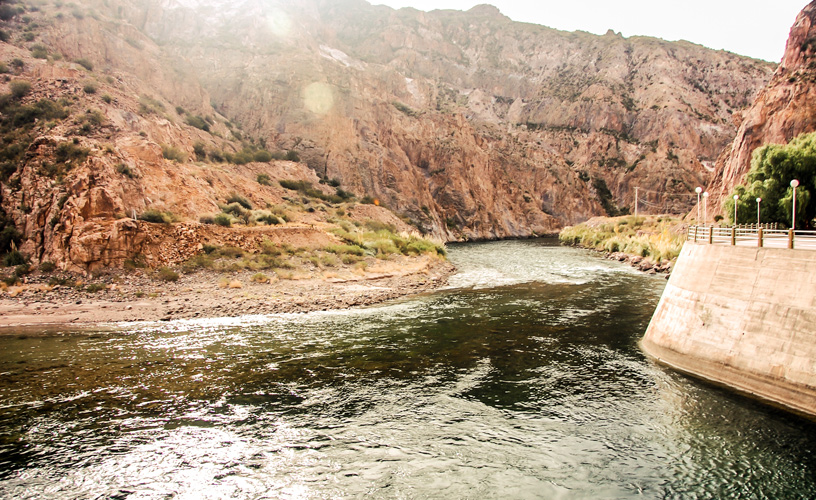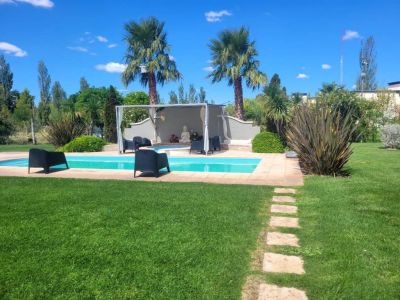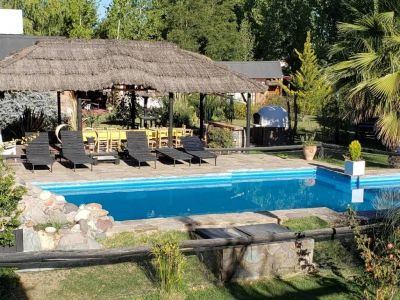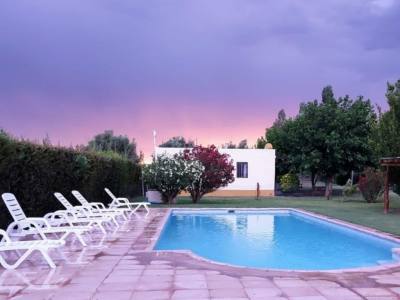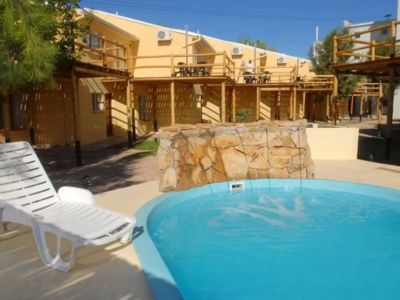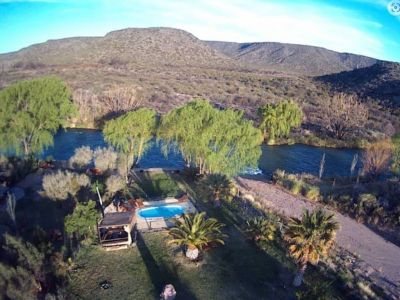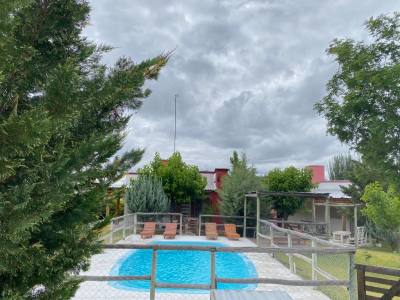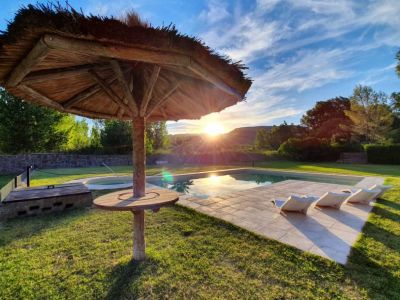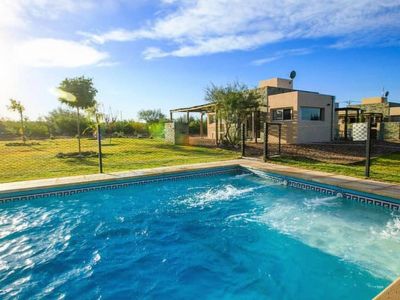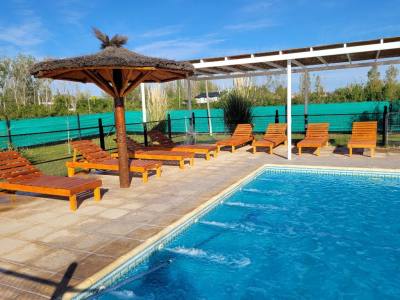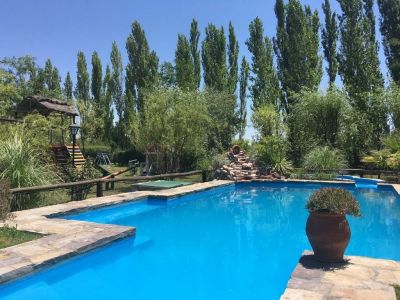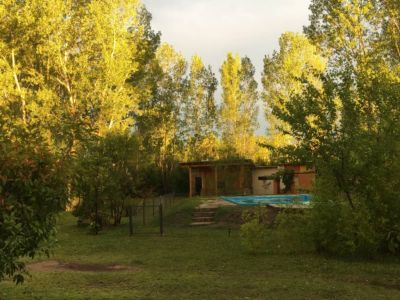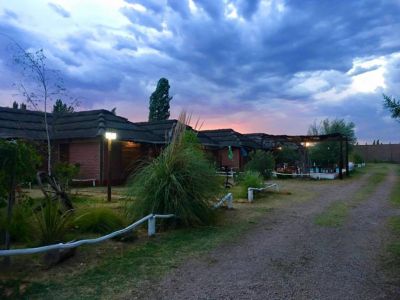The power stations established on the Atuel River are the evidence of man’s wit to produce welfare in the big cities.
Most people ignore how the electric power that lets us turn on our computer, our stereo or just the lights is generated. Several virtual encyclopedias could give us an answer, but we resolved to learn it at the very spot where it is produced.
A tour around Southern Mendoza led us to some hydroelectric power stations with amazing giant facilities and complex technical equipment.
Everything started at the Villa Nihuil area, with its mountainous surroundings of changing hues, a lake offering excellent fishing opportunities and a residential spot where tourists gather every summer to take advantage of shores and waterways.
Behind the Wall
This is the place where we saw the first dam containing a large water body. Its volume increases or decreases according to the seasons and the maneuvers carried out at the power station.
Farther ahead and following down the gravel road, we saw other four power stations settled down on the same river. They work with accumulation of water, generation of electricity and subsequent delivery of power to distribution centers.
In between one and another, we appreciated the famous Atuel River Canyon, the echo chamber of the river bearing the same name. We made several stops with our vehicle in order to behold the huge colorful rocky formations eroded by the wind.
It was a very arid zone and a thread of water was running down there. The rocks were very strange. We let our imagination be carried away and we discovered figures in the rocks and gave them names according to what they reminded us of.
But let us continue with the power stations. In the same way we were overwhelmed by the unspoiled nature, we also found that man had raised unbelievable structures.
Engines Roaring
Hydroelectric power stations are part of this itinerary: we understood the importance of their existence and incorporated them into the scenery. One by one, they appeared behind the road bends and emerged imposingly amidst the ruling aridity.
As we got past Nihuil II, we had the chance to visit it. Once inside, we saw large engines, pipes and consoles that contribute to the generation of power and learned some more about all this.
We jotted down Alfredo Rulfo’s words. He is in charge of the plant: “The main feature is that the water is used as fuel. The potential power that enters the turbines is transformed into kinetic energy (movement) and then into mechanic energy, which causes the turbine to move”.
“A small lake and a 180-meter-high waterfall deliver their content to the main building through a pipe measuring 10 kilometers of length and featuring a 5-meter diameter. At this point, it forks in the shape of a comb in order to feed the six generating units with 20 and 25 megawatts.”
And he continued: “Afterwards, it passes onto the generators, where 13,200 watts of alternating current are managed. The entire operation is manual here whereas, in other power stations, they are telecommanded”.
The transformer plant is in charge or raising the voltage in order to send power to the City of Mendoza and then onto the national system to be distributed throughout the country.
The Atuel River is fed by the glaciers that rest on the heights of Mendoza and its volume changes according to season and changes in the atmosphere. Dams contain water to be used during the periods of shortage.
Charge of Light
The need for further electricity throughout the country determined the incorporation of two more stations in addition to Nihuil I, namely: Nihuil II and III. Another river in Mendoza, the Diamante, gives its waters to other hydroelectric power stations.
As we retired, we had a look at the building from outside. The strength of the water falling into a small lake formed turbulence. A native plant -the thick tall cactus- was the perfect frame for the river.
The Atuel River continued flowing, now like a simple mountain waterway, falling from one rock to another. In the meantime, the power station works 365 days and nights a year for us users to keep our lights and our computers on as long as we need.
Mónica Pons
Eduardo Epifanio
